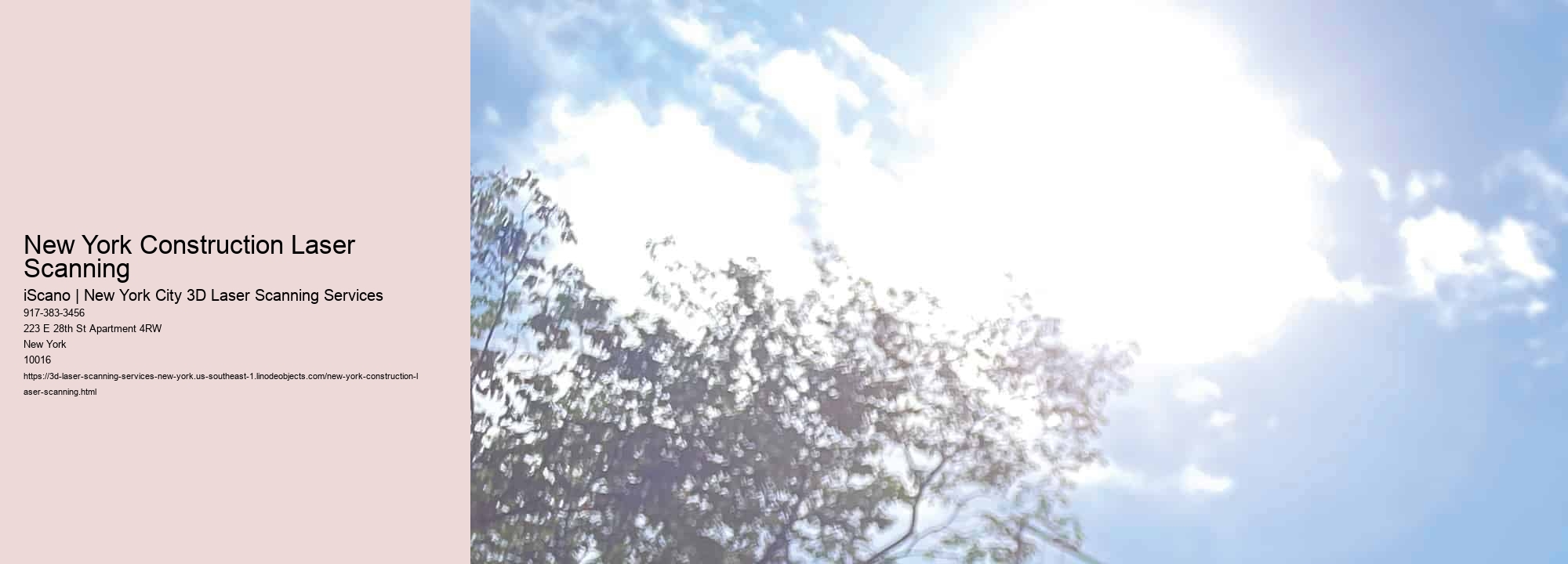New York Architecture Revolutionized: The impact of 3D laser scanning services
The following is a short overview of the topic:
This article examines the effect 3D scanning has had on New York City's architecture.
The essence of 3D laser scanning services
A cutting-edge technology known as 3D laser scan utilizes laser light to take precise measurements on objects, buildings and landscapes.
The process, also referred to LiDAR (Light detection and Ranging) is able to create exact three-dimensional data points or "point clouds," that can be used to construct digital models of physical spaces.These models are extremely precise up to millimeter precision that provide a dazzling level of precision.
Applications of Architecture
The information you collect is crucial to a variety of applications, such as:
-
Preservation of historical buildings: New York has a rich architectural heritage and many historical buildings.
3D scanning helps in documenting these structures in detail helping in conservation and restoration efforts.
-
Retrofitting and Renovation 3D scanning is a great tool for renovations in densely populated areas like New York. New York Construction Laser Scanning . It allows precise measurements to make sure that the design is in perfect alignment with the existing structures.
-
Design and Construction: Architects are able to make use of 3D models in order to visualize new buildings within the existing urban landscape, and assess potential impacts prior actual construction.
New York Architecture: Revolutionizing the Scene
The New York architecture is evolving by the introduction of 3D laser scanning.
This technology is changing various aspects of city's architectural techniques:
Accuracy, Efficiency, and Precision
It helps speed up the surveying process when it is in New York, where the rate is very fast.
Encourage innovation in design
3D scanning can open new possibilities for imagination and creativity in architectural design.Architects can experiment with complex forms and structures knowing that they have accurate information to support their designs.This has led to an increase in avant-garde architecture that pushes the limits of conventional architecture.
Preservation of Heritage Buildings
The historic buildings of New York are an integral part of the city's identity.
3D laser scanning has become the most important tool to preserve these structures.By creating detailed digital replicas, architects can undertake repairs more efficiently and efficiently, ensuring that these buildings continue to grace the city's skyline.
laser scanFacilitating Urban Planning
The dense urban fabric of New York is a challenge for urban planners to complete the task. 3D laser scanning helps city planners create more accurate and detailed representations of the city which helps them make better choices regarding urban design as well as the development of infrastructure.
Sustainable Construction Practices
Sustainability is a growing concern in the construction industry.
3D laser scanning helps in optimizing designs for energy efficiency and minimizing the waste in construction, leading to more sustainable construction methods.
Case Studies: 3D Laser Scanning in Action
A number of projects that are located in New York have already benefited from 3D laser scanning:
-
Renovation of a Historic Building: Lower Manhattan project relied on 3D scanning to ensure accurate mapping of an historic building to prepare it for major renovation.
This ensured that the latest additions merged seamlessly into the original design.
-
New Skyscraper Style: For a new tower in Midtown the architects employed 3D models derived from laser scans to visualize how the building will integrate into the existing urban landscape by analyzing factors such as wind patterns and sun exposure.
-
Subway Expansion: For its subway extension project the MTA used 3D scanning to map underground structures with precision. This has reduced the disruptions that occur during construction.
Challenges and Future Directions
Although it has many benefits however, the use of 3D laser scanning in New York faces challenges.The high costs of equipment and requirement for training that is specialized are a major obstacle.
As the technology gets more widely used and accessible, it is likely to become a standard in the field of architecture.
The future of 3D laser scanning in New York's architecture is promising.Integration with other technologies like Building Information Modeling (BIM) and Virtual Reality (VR) will further enhance its capabilities.The city may see more ambitious projects, where historical preservation and modern innovation coexist seamlessly, thanks to the precision and possibilities offered by 3D laser scanning.
The final sentence of the article is:
The New York City's architectural landscape is changing due to 3D laser scanning. construction site This technology gives precise data and stimulates innovation.
New York Construction Laser Scanning - construction site
- terrestrial laser
- bim modeling
- building
As New York continues to grow and grow 3D laser scanning will definitely be a key factor in shaping its future cityscape, blending the past with the contemporary in the city that never does.
